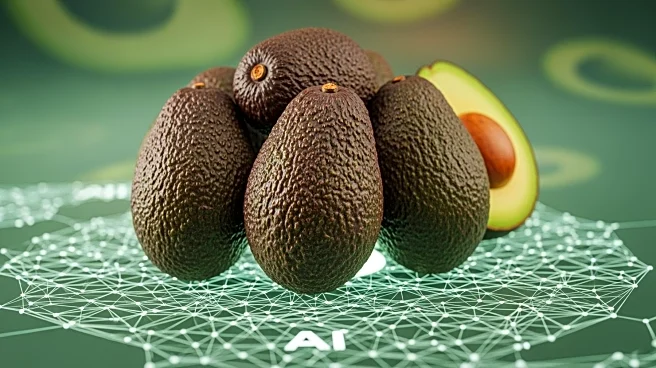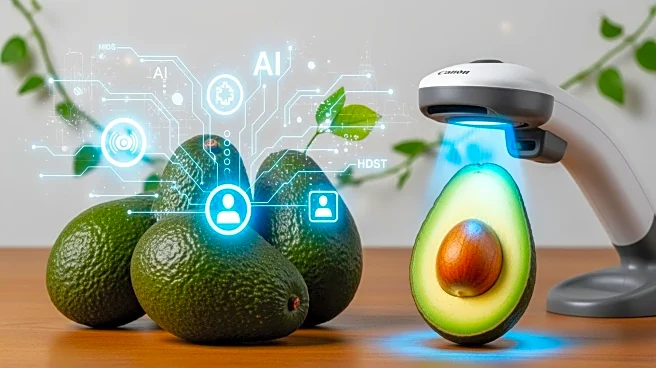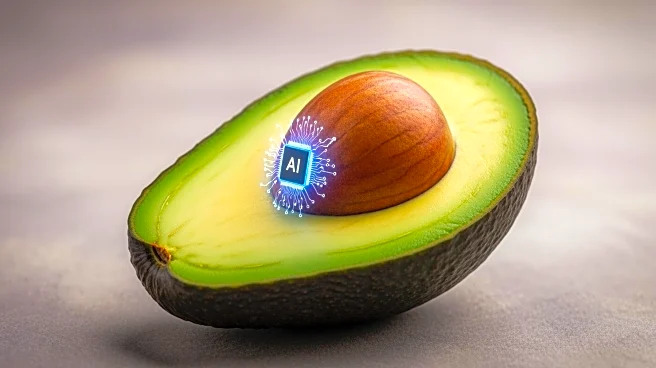What's Happening?
Researchers at Oregon State University and Florida State University have developed a smartphone-powered AI application designed to accurately determine the ripeness of avocados. The AI model, trained using
over 1,400 iPhone photos of Hass avocados, can predict the firmness of the fruit with more than 90% accuracy. This innovation addresses the common issue of avocado overripeness, which contributes significantly to food waste. The AI analyzes subtle cues in texture, color, and shape that are often missed by human observation. The app is not yet available to consumers, but the researchers aim to make it accessible in the future.
Why It's Important?
Food waste is a critical global issue, with nearly a third of all food produced for human consumption going to waste. In the United States, federal agencies have set a goal to reduce food waste by 50% by 2030. Innovations like the AI app for determining avocado ripeness could play a significant role in achieving this target by helping consumers and retailers make informed decisions about when to use or sell produce. This technology has the potential to be applied to other fruits and vegetables, further aiding in the reduction of food waste and promoting sustainable consumption practices.
What's Next?
The long-term goal is to make the AI app available to consumers, allowing them to make smarter purchasing decisions and reduce food waste. Researchers are exploring the possibility of applying this technology to other types of produce, which could further enhance its impact on reducing food waste. As the app becomes more widely available, it may influence consumer behavior and retail practices, encouraging more efficient use of resources and contributing to sustainability efforts.
Beyond the Headlines
The development of AI applications for food ripeness assessment highlights the intersection of technology and sustainability. It raises ethical considerations regarding the use of AI in everyday life and its potential to influence consumer habits. Additionally, it underscores the importance of technological innovation in addressing environmental challenges and promoting sustainable practices.












